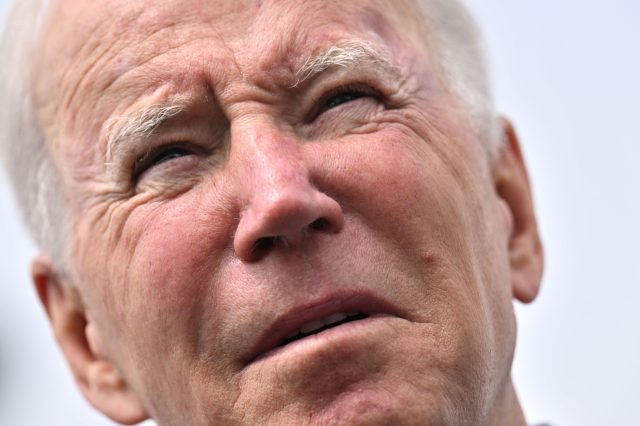Americans are expecting rapid price increases in the year ahead and expect their own spending will have to increase at the fastest pace on level to keep up.
Not surprisingly, this was accompanied by a larger share of U.S. consumers saying they expect their household financial situation to deteriorate.
The Federal Reserve Bank of New York reported on Monday that the median expected rate of inflation for the year ahead rose to 6.6 percent in May, up three-tenths of a point from April and tied with March for the highest rate measured in survey data going back to 2013.
The New York Fed derives the median expected rate of inflation by asking respondents to estimate the odds that over the next 12-months inflation will be between 12 percent or higher, between 12 percent and eight percent, between eight and four percent, between four and two percent, and between two and zero percent.
In a separate question, the Fed asks consumers to give a point estimate for what they think the rate of inflation will be over the next twelve months. Until recently, this typically was close to the median expected rate. In the current period of high inflation, they have diverged. The median expected point prediction in May was 8.4 percent, up from 8.1 percent in April. The record high of 8.5 percent was hit in March.
In the 12-months leading up to May, consumer prices rose 8.6 percent, the fastest pace since late 1981. Inflation had dropped to 8.3 percent in April from 8.5 percent in March. Inflation expectations appear to be tracking the actual experience of inflation very closely.
Expectations for inflation over the next three years remained steady, although still at very elevated levels. The median expected rate of inflation over the next three years stayed at 3.9 percent and the median point prediction ticked up to 4.8 percent from 4.7 percent.
Households expect that they will increase their spending by 9 percent over the next twelve months, up a percentage point from April. This shows demand remains very strong, increasing the inflationary pressures in the U.S. economy. This is the highest reading in the survey data. A year ago, households expected to increase their spending by five percent.
Expectations for household finances worsened. The share of consumers saying they expect to be much worse off a year from now jumped to 10.8 percent from 6.6 percent in April. The share expecting to be somewhat worse off rose to 28.6 from 25.2. Both are record highs for the survey. A combined 39.4 percent expect to be worse off.
At the same time, the share expecting to be much better off fell to 3.5 percent from 4.6 percent. The share expecting to be somewhat better off also declined from 21.8 percent to 17.1 percent.
Expectations for the unemployment rate to be higher in a year increased to 38.6 percent, up three-tenths of a point from April. Other indicators, however, show the labor market remains extremely tight. Expectations of voluntarily quitting a job moved up to 20.3 percent, matching the pandemic high hit in September of 2020 but still below prepandemic levels. Actual quits recorded by the Department of Labor’s Job Openings and Labor Turnover Survey, known as JOLTS, have slipped in recent months but remain near record levels and rate above the prepandemic rate.
Expectations of losing a job remain very low, although they ticked up to 11.1 percent from April’s record low of 10.8 percent. Before the pandemic, this was often around 15 percent. The probability of finding a new job within three months of being let go rose to 58.2 percent, a pandemic-era high. In February 2020, the last month before the pandemic hit the labor market, this stood at 58.7 percent.
Consumers expect credit will become harder to obtain. The share saying credit will be either somewhat or much harder to obtain a year from now rose to 55.3 percent, up from 52.2 percent in April and 41.2 percent in January.
Similarly, consumers say credit conditions have already tightened considerably. The share saying credit conditions have tightened since a year ago rose to 49.5 percent from 45.5 percent in April. Back in January, prior to the Federal Reserve’s rate hikes, 35.5 percent reported credit was harder to get than a year prior.

COMMENTS
Please let us know if you're having issues with commenting.